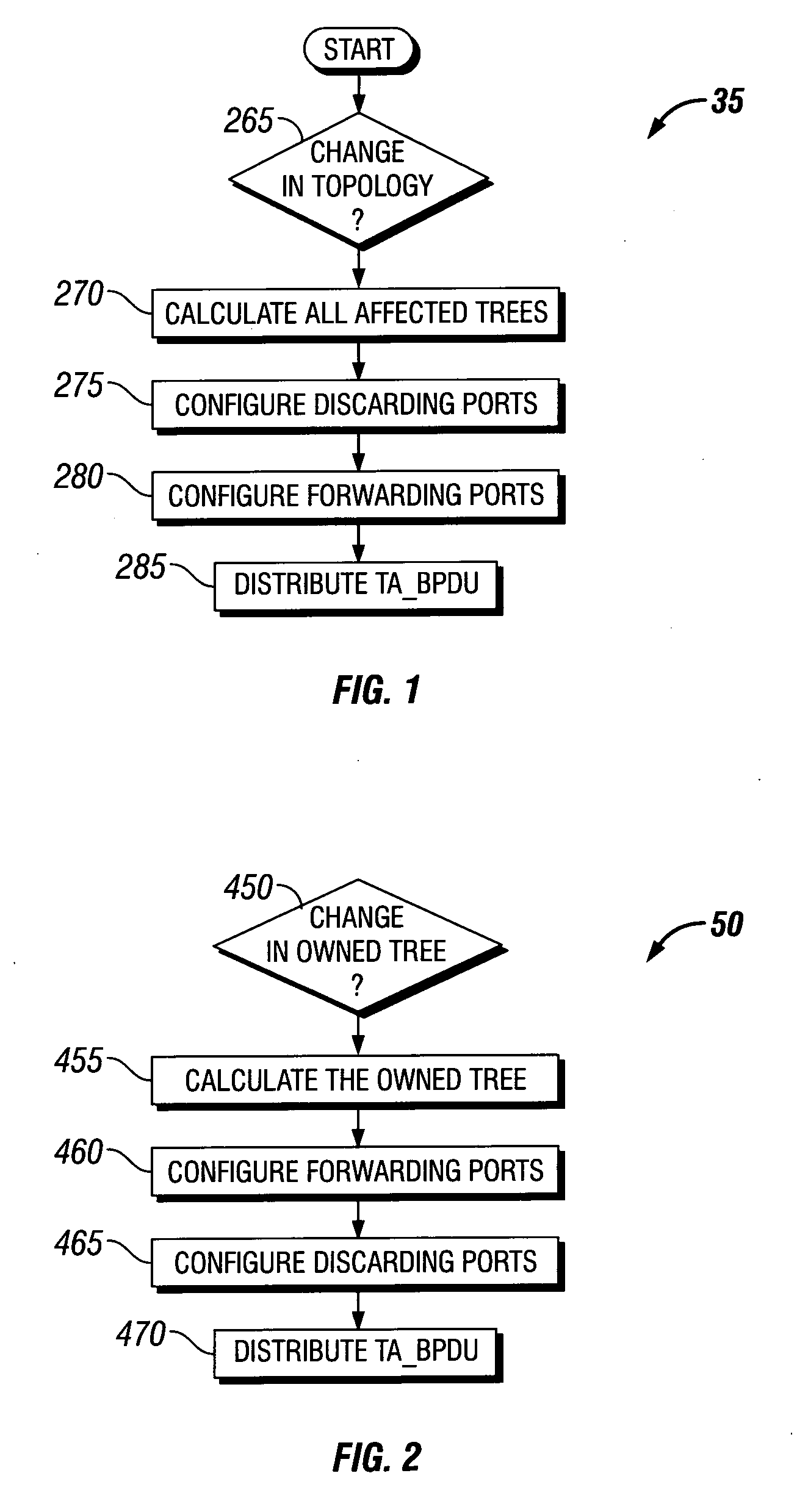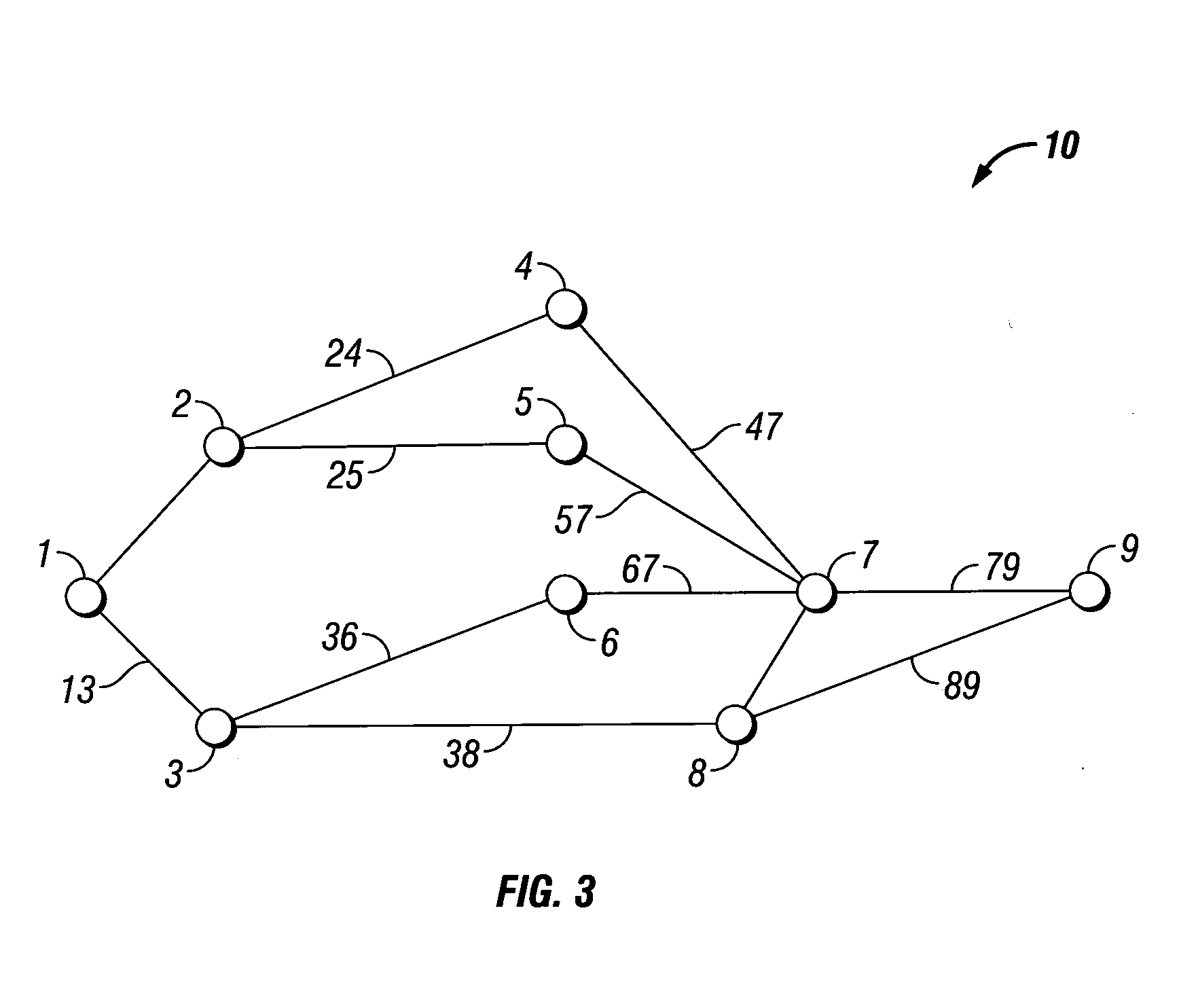Method And System For Controlled Tree Management
a tree management and control method technology, applied in the direction of data switching networks, data transmission by path configuration, digital transmission, etc., can solve the problems of failure of components and links, failure of most networks, and unsatisfactory phenomena, so as to reduce the recovery time and ensure the symmetric forwarding path
- Summary
- Abstract
- Description
- Claims
- Application Information
AI Technical Summary
Benefits of technology
Problems solved by technology
Method used
Image
Examples
Embodiment Construction
[0037]FIGS. 1 through 18, discussed herein, and the various embodiments used to describe the principles of the present invention in this patent document are by way of illustration only and should not be construed in any way to limit the scope of the invention. Those skilled in the art will understand that the principles of the present invention may be implemented in any suitably arranged computer network.
[0038]The present invention is directed to a manner of using link state protocol principles in the implementation of a SPB (shortest path bridging) scheme for facilitating the flow of data traffic in a computer network, for example an Ethernet LAN (local area network). FIG. 4 is a flow diagram illustrating a method 20 of facilitating data traffic flow according to an embodiment of the present invention. At START it is assumed that a network operable to communicate data via a plurality of bridges has been formed, such as the one shown in FIG. 3. The network is, for example, an Ethern...
PUM
 Login to View More
Login to View More Abstract
Description
Claims
Application Information
 Login to View More
Login to View More - R&D
- Intellectual Property
- Life Sciences
- Materials
- Tech Scout
- Unparalleled Data Quality
- Higher Quality Content
- 60% Fewer Hallucinations
Browse by: Latest US Patents, China's latest patents, Technical Efficacy Thesaurus, Application Domain, Technology Topic, Popular Technical Reports.
© 2025 PatSnap. All rights reserved.Legal|Privacy policy|Modern Slavery Act Transparency Statement|Sitemap|About US| Contact US: help@patsnap.com



